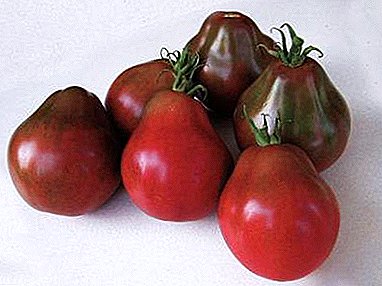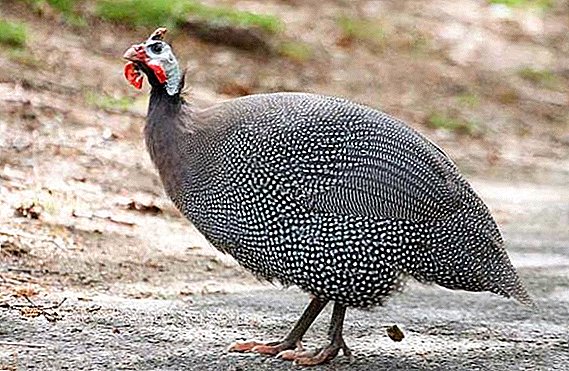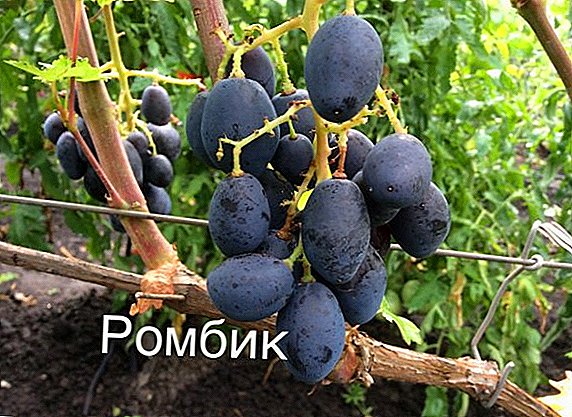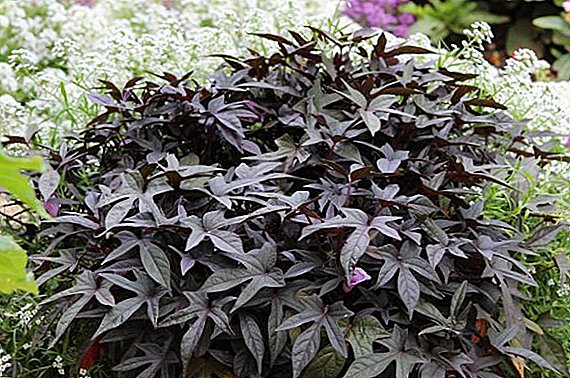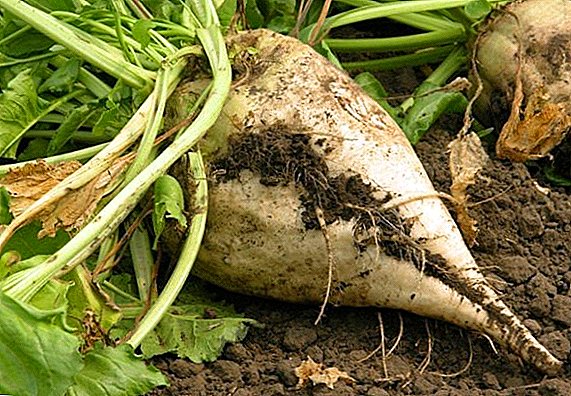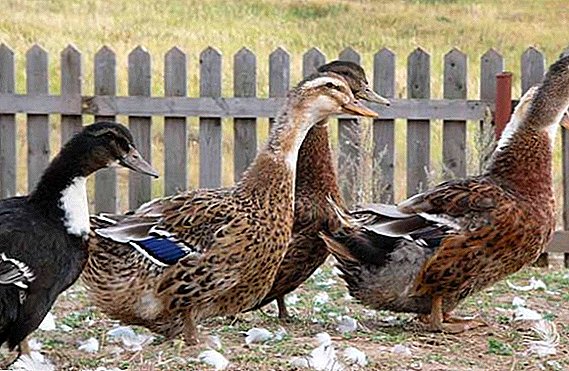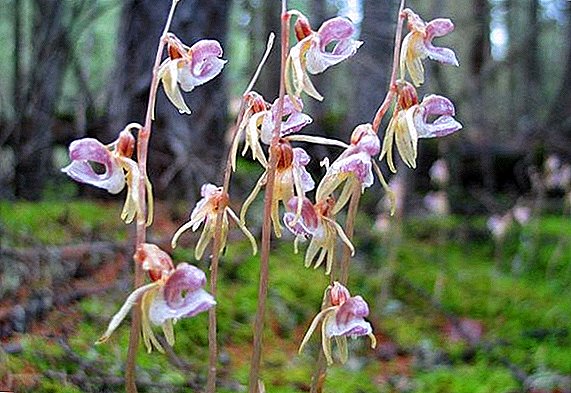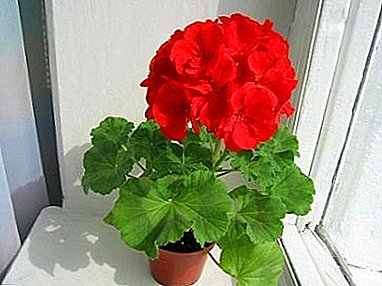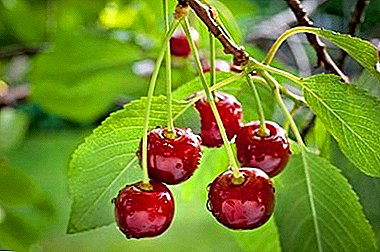
Thanks to its dietary properties, cherry has gained great popularity among lovers of fresh fruits and various dishes based on it.
This popularity is multiplied by specialists by breeding new varieties with the search for fresh original qualities of this culture. But no one is going to forget the old ones either, especially since they still faithfully serve the person.
So “old”, but still actively cultivated in Russian gardens, is the cherry Griot Moskovsky, the description of the variety and the photo of the fruit will be found below.
Breeding history and breeding region
 In the 1950s, in the Soviet Union, which was forced to solve complex food problems of the postwar period, scientists were tasked to develop varieties of crops that would be able to produce good yields in a difficult climate.
In the 1950s, in the Soviet Union, which was forced to solve complex food problems of the postwar period, scientists were tasked to develop varieties of crops that would be able to produce good yields in a difficult climate.
One of the scientists who actively took on this task was the doctor of biological sciences. Khasan Enikeev (1910-1984).
A convinced follower and ardent propagandist of the teachings of Michurin, he turned out to be, as they say, in his element, since for several years before he had specialized in breeding winter-hardy varieties of plum and cherry.
The author of dozens of fruit species has always set as his scientific goal the creation of such crops, the fruits of which would have excellent taste qualities.
In 1959 in the Zagorje near Moscow, on the experimental vineyards of the All-Union Selection and Technological Institute of Horticulture and Nursery, Professor Enikeev brought a new variety at that time - Moscow Griot.
Bush cherries with high yield prospects were obtained by cloning a Western European variety Griot Otsgeymsky.
 According to its main parameters, the Moscow branch of the Griotov was intended for regionalization in far from the southern Moscow region.
According to its main parameters, the Moscow branch of the Griotov was intended for regionalization in far from the southern Moscow region.
But its cultivation quickly spread to the southern regions of Russia. Non-Black Earth Region and Central Black Earth Region of the Russian Federation. In these areas, cherry varieties such as Vianok, Generous and Lebedyanskaya grow well.
In the same 1959 Griot Moskovsky was entered in the State Register. From the mid-1960s, the variety was sent to state variety trials.
Appearance of cherry Griot Moskovsky
The following structural features of the species are inherent in this cherry:
Tree
Belongs to medium category fruit crops. Grows up on average in adulthood to a height of 2.5 - 3 m. Lubskaya, Novella and Minx are distinguished by their average content.
At the same time, a rather wide densely-leafing crown is formed, which, as a rule, outwardly has a ball-like appearance.
Shoots. Reasonably thin. Have pronounced wiltedness.
Leaves. They are characterized by an average size. Different egg-shaped. The edges dvuyakotupopilchatye. Colour - bright green, matte texture.
Fetus
 Is different average and more than average sizes.
Is different average and more than average sizes.
The average cherry of this variety weighs from 3 to 3.5 grams, in rare cases, the fruit may have a mass of 5 grams.
It has almost the correct rounded shape.
The color of the thin delicate skin varies from dark red to actually black, while at the same time barely noticeable subcutaneous spots often appear on it. Rossoshanskaya Memory of Vavilov also has similar fruits.
Under the skin is the pulp of dark red color, rich in juice. Medium-sized round bone is not very easily separated from the pulp.
Further in the photo article on which you will see how the cherry variety of Moscow Griot looks and description of the characteristic.
A photo






Characteristics of a variety
The described cherry Griot Moscow is a variety of universal practical application. Moscow griot is equally well consumed both in fresh form and in the form of processed foods (jam, jams, etc.). Versatility of application is distinguished by the same age, Volochaevka and Mayak.
Its feature is belonging to self-infertile varieties - the largest category of cherries. In other words, this variety not able to fertilize through self-pollination of their own flowers.
This means that for normal development and fruiting near the Moscow Griot it is necessary to plant trees of self-bearing species. For this, Pink, Vladimirskaya, Shubinka, Shpanka Kurskaya, Orlovskaya Early and a bottle of some other varieties are suitable.

Trees of Moscow Griot live an average of 16-18 years. Productive fruiting begins at 4 or 5 years after planting.
With all the strict agronomic requirements and with proper care for this crop, it is capable of maximum productivity in 15-17 kg from a tree.
But in practice, the average average yield is lower, fluctuating within 8-9 kg from a tree, which is approximately 6-8 tons of yield per hectare.
As noted above, this variety was developed for central Russia, characterized by a temperate climate, not very hot summer and frosty and very severe winters with all the ensuing consequences for the thermophilic in principle culture.
As a result of the targeted selection, Griot Moskovsky turned out in comparison with its original clone. much more winter hardy. According to observations, he usually tolerates the Russian cold quite well.
High frost resistance is demonstrated by the varieties Nadezhda, Tsarevna, in memory of Enikeeva.
However, if very cold weather occurs, it can lead to freezing of the root system, branches and fruit buds. Therefore, a gardener who grows this variety in his plot should keep this feature in mind and take appropriate measures.
Cherry Griot Moscow refers to the varietal varieties. Its fruits, most often developing on the shoots of the first year of life, are traditionally ripen in the period from 15 to 20 July. The same sign is demonstrated by the Ashinskaya Steppe and Lubskaya.
The taste of a juicy ripe fruit turns sweet, with a pleasant sourness. Basically, the fruits of this variety are used for fresh table consumption. But often this cherry is also processed into juices and preserves.
 Due to increased juiciness to transport it, especially in large quantities, it is necessary with great care.
Due to increased juiciness to transport it, especially in large quantities, it is necessary with great care.
With regard to the quantitative content of basic chemicals, "portrait" of Griot Moskovsky looks like this:
| Composition | amount |
|---|---|
| Sahara | 10,6% |
| Free acids | 1,5% |
| Dry matter | 13% |
Planting and care
For the normal development of the plant all the nuances are important. Success in the cultivation of the Griot Moskovsky variety, his health and durability are laid at the very first stage - the stage of choosing a place for planting a seedling.
A heat-loving plant by nature in a place where there will always be plenty of sunshine.
At the same time, this place must be secure. protected from cold winter winds and burning summer dry winds. In most cases, such a place is south side of the garden.
It is better to plant a tree in spring. If you do this in the fall, then there is a risk that the young and still weak tree will simply freeze under the blows of the winter cold.
 If the gardener decides to plant the Griot Moscow in September, the seedling is recommended to carefully prikopat.
If the gardener decides to plant the Griot Moscow in September, the seedling is recommended to carefully prikopat.
It is also important to maintain the optimum distance between seedlings when planting.
Since this variety is a bush form, the clearance between its individuals should be not less than 2 m in a row and 2-2.5 m between the rows.
Sapling down in a hole with a diameter of 60 cm and a depth of 50-60 cm, where fertilizer was applied in advance. The ground extracted from the pits is mixed with humus and potassium chloride.
The seedling inserted into the well is instilled with the resulting fertilized earth mixture and Pour 2-3 buckets of previously defended cold water.
After the liquid is completely absorbed, the soil around the string should be Promulchrovat sawdust. A layer of mulch at 2-3 cm will not allow water to evaporate, and dried soil will crack.
On pruning is worth mentioning, as correct pruning is worth a lot. Thanks to well-done pruning, a gardener can, for example, correct the sugar content of fruits and the level of tree yield, provide the plant with greater endurance and resistance to diseases.
 Formation of the crown must be made immediately after landing. In this case, the branches of the seedling should be cut to a third of their length. Due to this, the crown will be formed correctly.
Formation of the crown must be made immediately after landing. In this case, the branches of the seedling should be cut to a third of their length. Due to this, the crown will be formed correctly.
Regular pruning of cherries is done in spring, approximately 18-20 days before bud break.
The same must be done in relation to sick, dried branches, with the aim of thinning the thickened crown.
Fruitful branches are also pruned if they turn out to be too long and go down to the ground.
If produced full pruning, the branch should be cut at its very foundationwithout leaving after work hemp. Of course, the strongest and most prolific branches are preserved on the tree.
Diseases and pests
This sort of cherry has fairly high immunity to scab. For this reason, it is used by many breeders as a donor of the immunity of this disease.
However, the Moscow Griot, like many other old varieties of cherries, vulnerable to fungal diseases such as coccomycosis and moniliasis.
Resistance to coccomycosis is demonstrated by Zhukovskaya, Podbelskaya, Kharitonovskaya and Minx.
Coccomycosis which is caused by the impact on the plant of the fungus Sossomuse hiema, accompanied by the appearance on the leaves of brown spots first, and then large spots. At the same time, the bottom of the leaves covers a characteristic patina of pale pink color.

After a short time, the leaves are massively showered, which greatly impairs the readiness of the tree for a cold winter.
A few years of this disease almost certainly leads to the death of a cherry.
Since fungal spores remain on the showered leaves, they must be removed. It should also dig up the soil in the fall and spring.
In the spring, it is necessary to spray the foliage with a 3% solution of Bordeaux mixture. After the flowering stage has passed, a second spraying is made with a solution of copper oxychloride. The third spraying is done after harvesting - either with a solution of copper oxychloride, or with a 1% solution of Bordeaux mixture.
Leaves and branches of the plant affected by moniliasis become burned, so the disease naturally got its second name - monilial burn Patients shoots crack and die.
Another sign of a dangerous disease is the appearance of small growths of a grayish shade on the bark. The same growths on fruits, as a rule, soon end in their rotting.
You can fight monilioz with a 3% solution of ferrous sulfate or Bordeaux mixture. They treat the tree and the soil around it before the buds bud.
 As an additional treatment can be carried out fungicide spraying (1% Bordeaux liquid) after flowering.
As an additional treatment can be carried out fungicide spraying (1% Bordeaux liquid) after flowering.
Despite the relative old age of the Griot Moscow variety, it is still an adornment of any modern table. It only takes a little effort.


